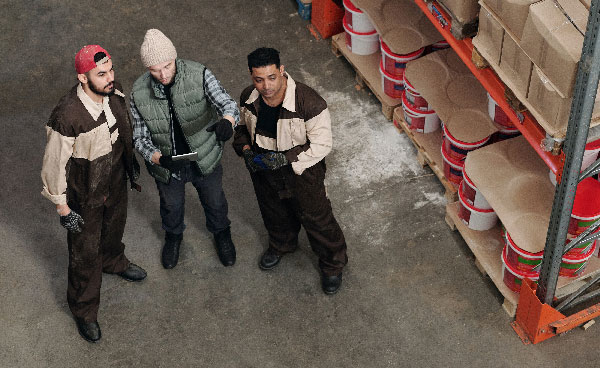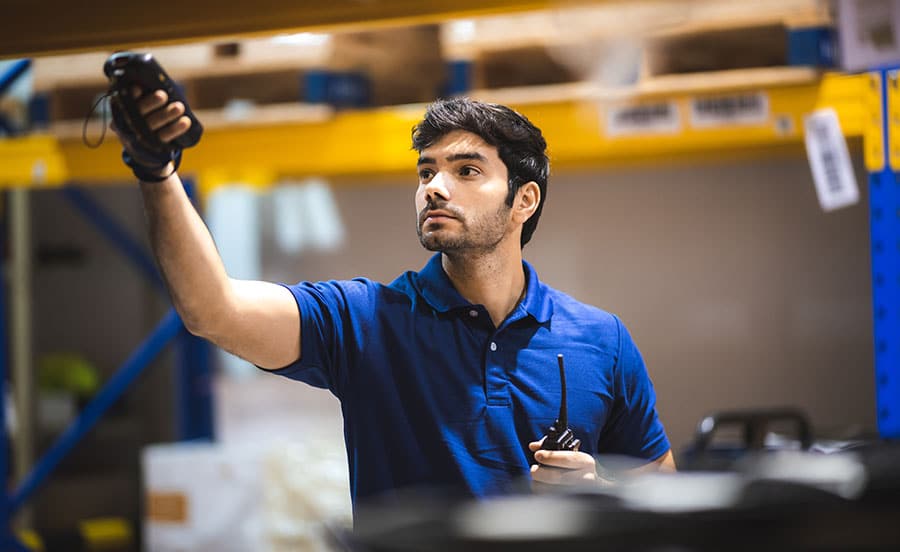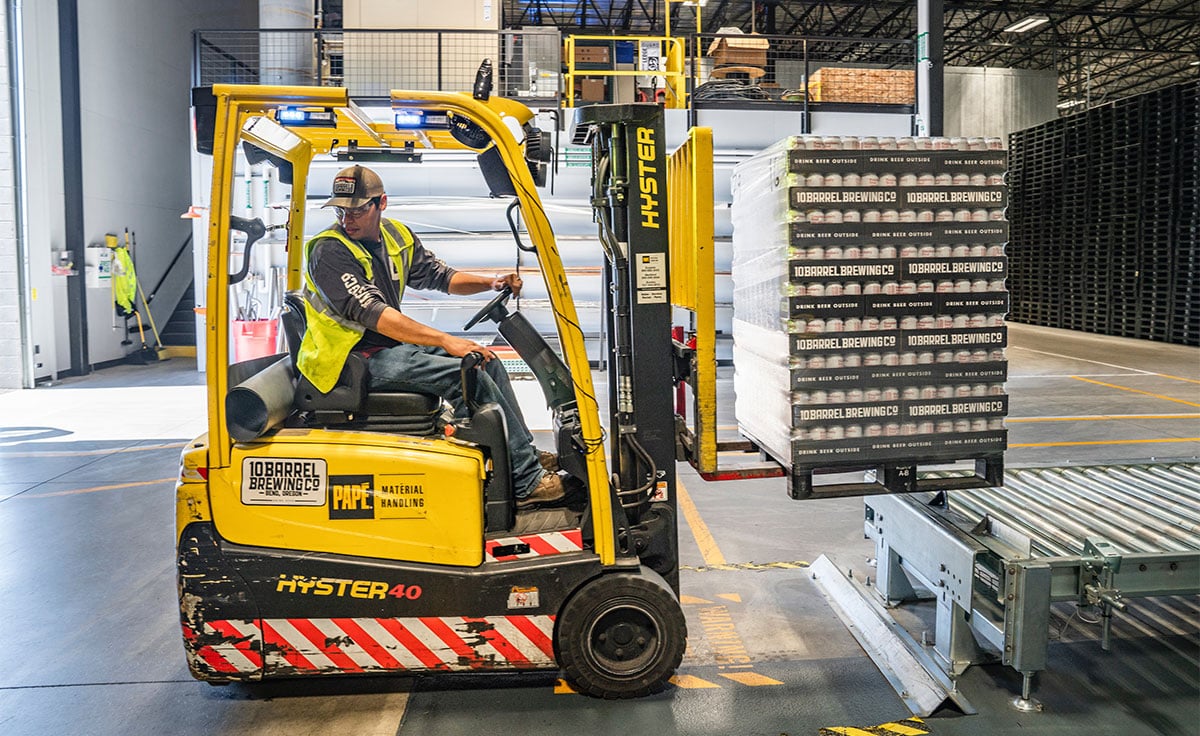Excerpts from a conversation with Kyle Franklin, Senior Solutions Consultant, Lucas Systems
Can a busy, productivity-obsessed warehouse find room for empathy? The stereotype of modern-day distribution centers is one of a massive facility with workers being driven at a relentless pace, subjected to second-by-second monitoring of their every move. But at a time when warehouses are having trouble finding and retaining staff, that kind of environment isn’t exactly conducive to ensuring a steady labor force. Even better pay won’t entice a worker to stay in a job where they’re treated like robots, or for that matter threatened with being replaced by one.
But what if we explore another strategy for attracting and hanging on to warehouse labor – empathy. What if we told you organizations that display genuine interest in their workers and provide them with a physically and mentally healthy environment are in the best position to keep those workers happy while ensuring their maximum productivity?
When we’re talking about the issue of hiring, training, and retaining good talent in the warehouse and distribution space these days, you would assume that solution number one is simply to pay people more. But is that not the case? And if not, what else does it take?

You Need More than Better Pay to Engage Workers
While pay is nice, there are certainly other solutions that you can implement, in addition to or in lieu of straight pay increases, to attract and retain workers. This was a point workers made abundantly clear in our recent Voice of the Warehouse Worker Insights. One such solution is technology, and how you can use it to help employees stay, flourish, and improve their day to day lives in the warehouse. Technology can be such a broad and vague term. And when you talk about technology and automation in the DC space, you could be causing fear in the worker who is thinking they are simply being replaced. That’s a significant perception around automation in the DC. So what specific types of automation and technology are we talking about that can actually enable a better work experience for the humans in the warehouse?
When researching types of automation or just starting a project, one strategy to employ is starting the process with empathy, essentially thinking about the warehouse user first, putting yourself in their shoes, and using that as a guide to automation. That fear of replacement by robots is a common one. But a lot of automation solutions don’t necessarily replace labor or users, they enhance or help or alleviate a burdensome task. Look around your warehouse and find tedious, hard to complete, or just boring tasks. Use those to find opportunities to automate. And you’ll find that you solve many problems in your warehouse because you’ve gotten rid of tasks that no one wants to do.
Indeed, by definition, what goes on in the DC is highly repetitive, making many of the processes ripe for automation. There are opportunities for low-hanging fruit. For instance, building boxes is one such task. Some warehouses will have a temp worker sitting in the corner building cartons all day. This can be solved with carton-building machines. With one customer, we helped them implement a machine that automatically built cartons to size for a specific order. There are many benefits to machines like that, namely getting that super repetitive, tedious task out of a person’s hands, allowing them to do more value-added tasks, like picking, packing, and troubleshooting. You also get the financial benefits where you’re shipping less air, you’re walking around and picking with less air, and you benefit from fewer touches at Packing just by picking into the correct box. So that’s a straightforward example. You’ve still got to pick product and put it in a box, and ship it out the door. But do we really need someone sitting in the corner building boxes?
Give Workers a Stake in Success
In choosing tasks that make sense to automate, it’s important to involve workers in the adoption and implementation stages of technology. You need to communicate with them, or better yet have them closely involved in what’s going on, as opposed to having it be something mysterious, where they don’t know what’s coming in, what it’s going to do, when it’s going to be implemented and what it’s going to mean for them.
It’s absolutely paramount, and the single best strategy for an effective project and solution for a couple of reasons. One, you start bringing them in to reduce that fear early. To reduce the thought that I’m being replaced. You mitigate that surprise when a solution shows up and all of a sudden, a worker has to use it. No one wants software dropped into their lap that they suddenly have to use or brings a significant change, especially something they use eight or more hours a day. Bringing them into that process early will help with change management.
Another very important aspect of involving workers in the process is finding things that differ from the standard operating procedure (SOP) in a warehouse. Every warehouse I’ve been to generally has a work instruction or SOP that workers are expected to follow. When you really start engaging them in the discovery and solution design process, you will find a lot more exceptions than you thought to those processes. The best way to surface those is early in the process so you have full visibility to the good and bad. We’ve all been a part of implementations, whether on the vendor side or the customer side, where at go live, all of a sudden, the solution doesn’t handle all of these exception scenarios. And then all of the sudden, after the fact, workers say, well, sometimes we do it like this, and sometimes we do it like that. You can’t separate those out unless you engage workers in all levels from the bottom up in the process and help problem-solve for those early. Another factor is the differing levels of operation and tasks that take place over the course of a year, depending on the seasonal demand. You do different things when you have a building full of people versus when you’re slower. And you do things differently depending on volumes that could fluctuate seasonally. There are a lot of considerations and variables that humans deal with a lot better than software does out of the box.
Engaging workers in problem-solving of process and productivity challenges through design workshops is another process that works. We obviously have the IT staff involved, the leadership and the supervisors, but we also spend a lot of time with the pickers and the packers, bringing them into the workshop. As I said, they surface some of those variances and show you creative ways to solve problems. Additionally, you will find workers are very creative, and very smart. They do the job eight hours a day, so they have figured out how to optimize for themselves. Oftentimes, you will find a really experienced picker that can help you by sharing some of the knowledge that they’ve achieved and they can help you put that knowledge into the system. Taking the best things they’ve discovered, then trying to democratize those benefits and shortcuts to everyone else so that the temporary worker who comes in off the street can share in some of that knowledge. We can only get that and put that into the system when we have the on-floor workers involved with that process. So there’s a way of formalizing worker input instead of just on a spot basis.
You can also continually improve solution software for warehouses through simple channels – suggestion boxes, regular sessions or implementation of worker councils – to listen to their feedback as far as enhancements and upgrades to the system. You can also do things like user score feedback, or those kinds of metrics. If you have a SaaS solution that’s web-based, you can use pop ups, asking things like, “How are you liking the system today? Score the system one to five.” Things like that can help you do metrics to make sure your solutions align with the workforce. These metrics can also help when training and making sure that people are still using all the features that you’ve spent so much time implementing. It can also lead to possibly uncovering newer features that you need or it will expose training deficits as well.
In the second part of our article, we’ll look at utilizing intuitive technology and how it can help to redefine the worker experience. In addition, retaining and attracting talent in the warehouse will likely require some changes in traditional thinking. We’ll explore what some of those new attitudes and ways of thinking might encompass.
Continue to Part 2
Hear Kyle’s thoughts brought to life in this podcast with Supply Chain Brain’s Bob Bowman.

About Kyle Franklin
Kyle Franklin is a Solution Consultant with Lucas Systems, leading numerous solution designs and implementations in the U.S., EMEA and Asia Pacific Regions and helping to transform and optimize distribution center operations worldwide. Prior to Lucas, Kyle held roles in international logistics and warehousing for global logistics providers. Kyle has an MBA with a focus in Operations and Strategy from the Katz Graduate School of Business at the University of Pittsburgh and a B.S. in Economics from the University of Illinois at Chicago.
About Lucas Systems, Inc.
Lucas Systems helps companies transform their distribution center operations and continuously adapt to changing market dynamics. We dramatically increase worker productivity, operational agility, and customer satisfaction.
Our solutions are built on 25+ years of deep process expertise and smart software using AI and voice technologies. Our solutions feature Jennifer™, the brain, voice, and orchestration engine that drives performance improvement gains. Make the smartest moves at the lowest cost with Jennifer™. For more information, visit www.lucasware.com.





